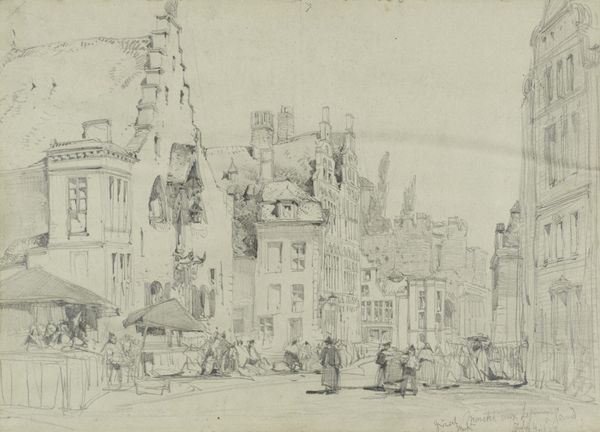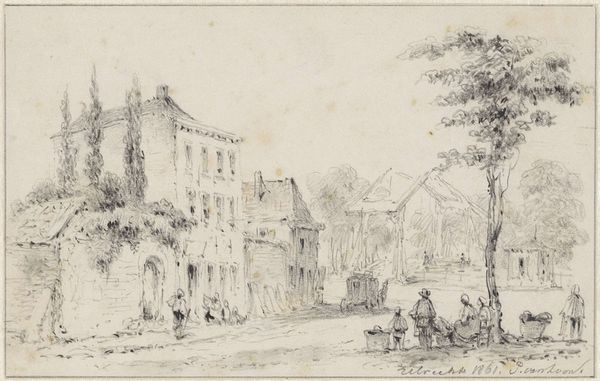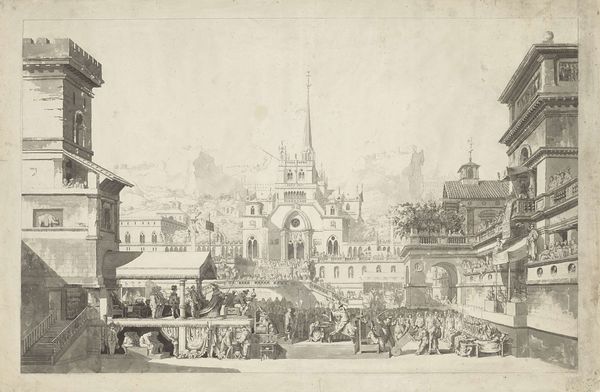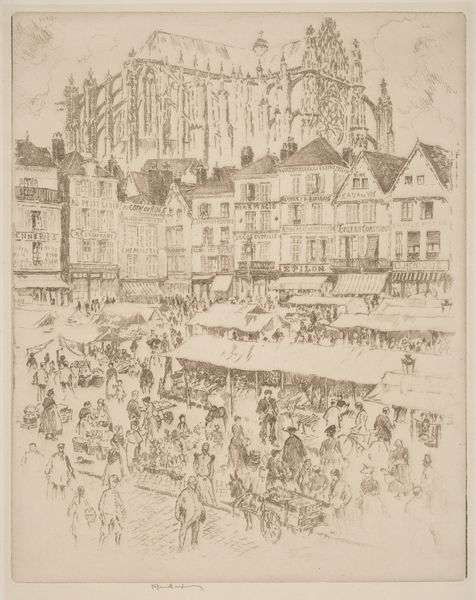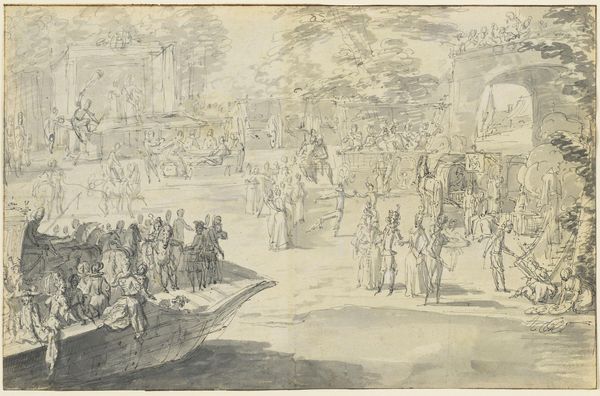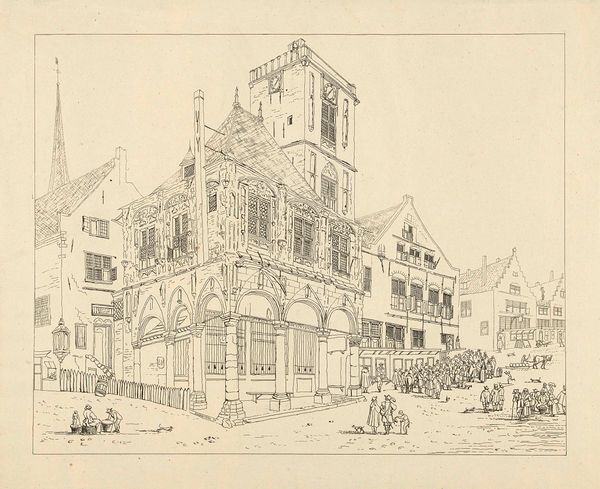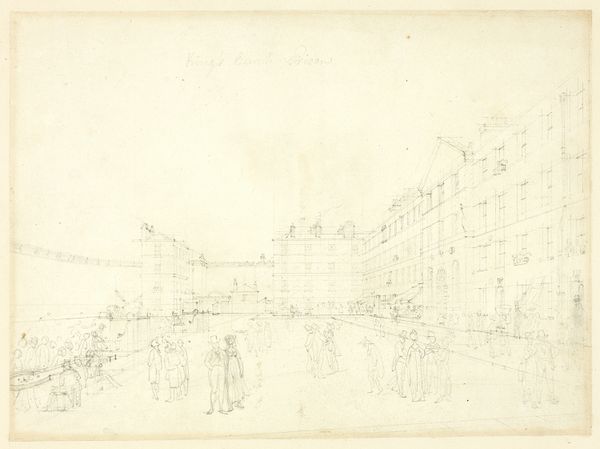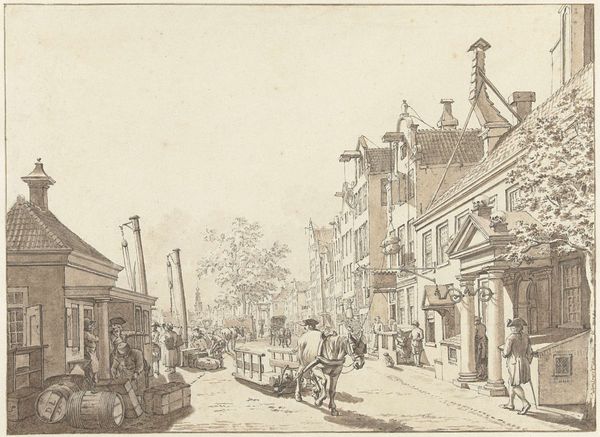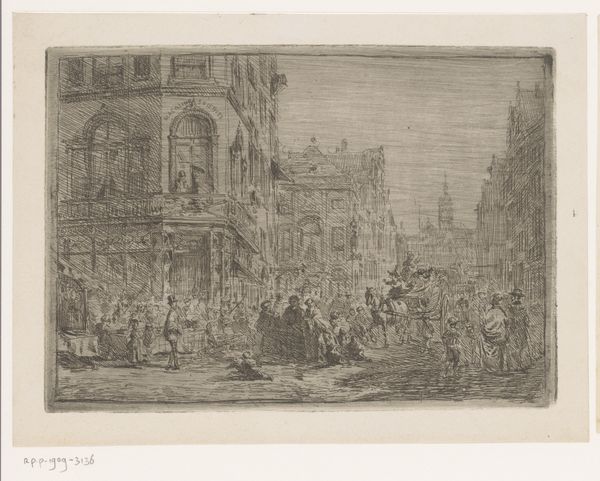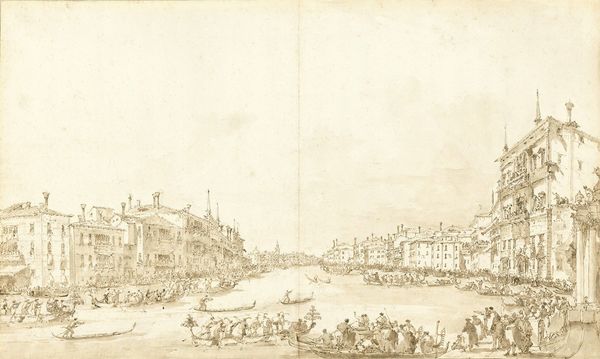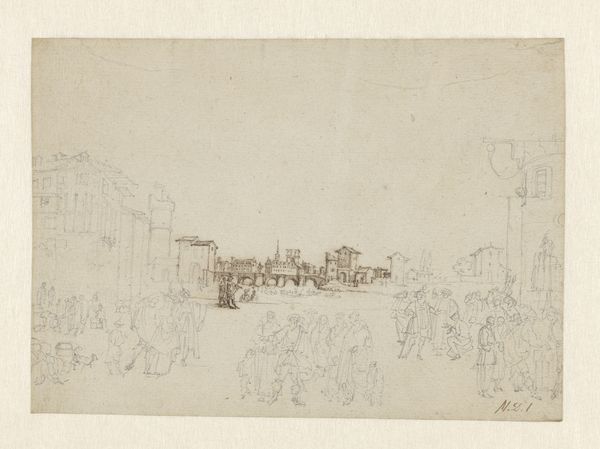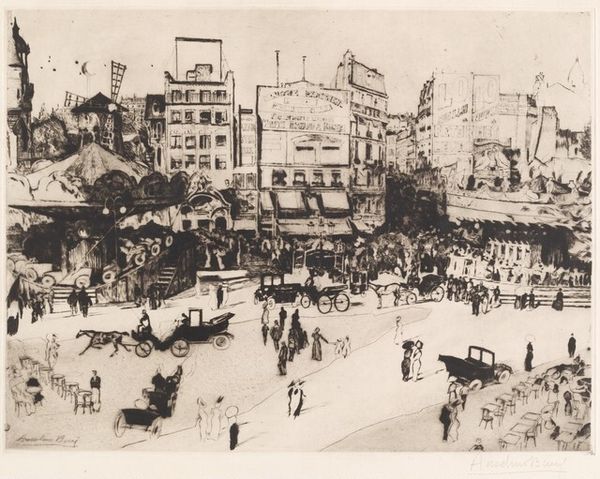
Dimensions: support: 115 x 186 mm
Copyright: CC-BY-NC-ND 4.0 DEED, Photo: Tate
Editor: This is George Robert Lewis's "Amsterdam," currently residing at the Tate. I'm immediately struck by the artist's use of line to create such a detailed, bustling scene. What do you see in this piece from a formalist point of view? Curator: The linear precision is certainly key. Observe how Lewis meticulously constructs space through perspectival techniques. The density of hatched lines creates tonal variations that suggest depth, yet the flatness of the picture plane is maintained. Notice the formal repetition in the architecture. Editor: So it's less about what's happening in the scene, and more about how Lewis composed it? Curator: Precisely. The success of the work lies in the calculated interplay of lines, shapes, and the resultant spatial tension, rather than narrative content. It invites rigorous analysis of its formal strategies. Editor: Fascinating. I’ll definitely pay more attention to his technique next time. Curator: Indeed, recognizing these aspects transforms our understanding.
Comments
Join the conversation
Join millions of artists and users on Artera today and experience the ultimate creative platform.
tate 6 months ago
⋮
The focus of this drawing is on the people of Amsterdam. They are shown crowding the streets, chatting with one another, shopping, or stopping for refreshments. Lewis uses broader washes of watercolour and contrasts in light and shade to add a sense of energy and movement. The drawing is signed and dated 1819. This suggests that it may have been made while Lewis was touring mainland Europe with TF Dibdin. Gallery label, October 2019
